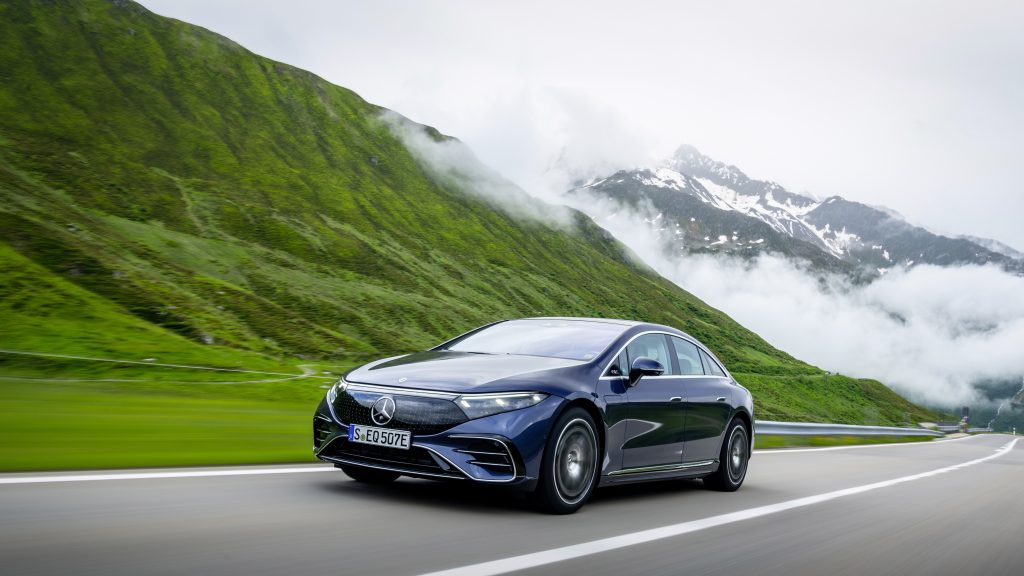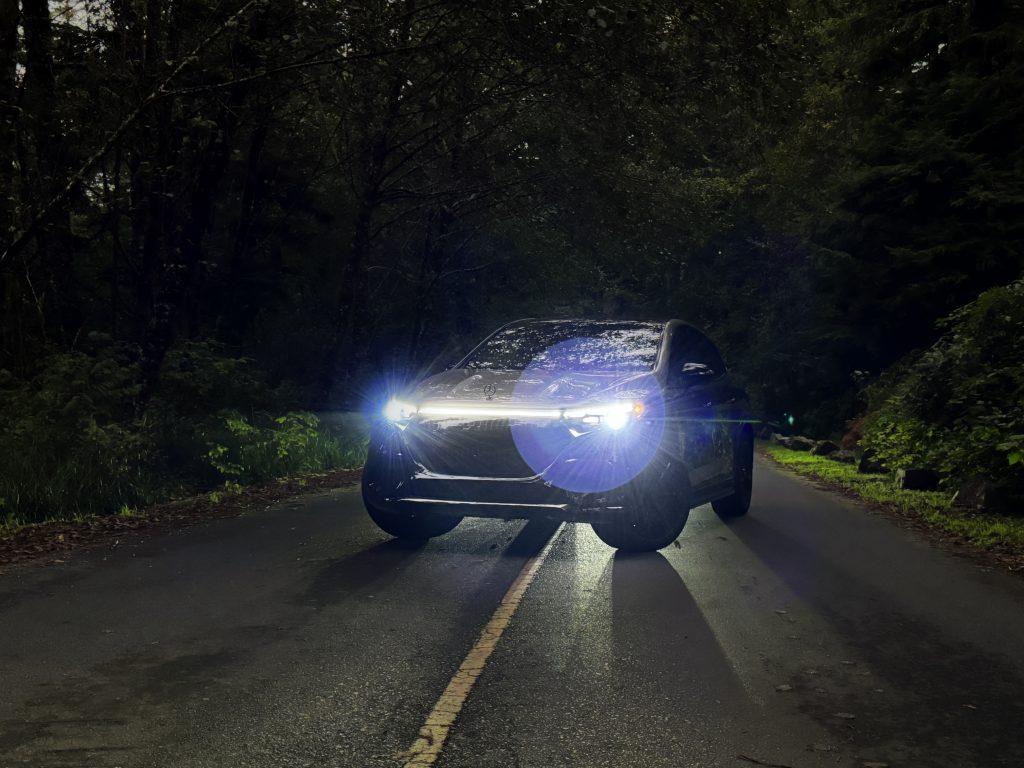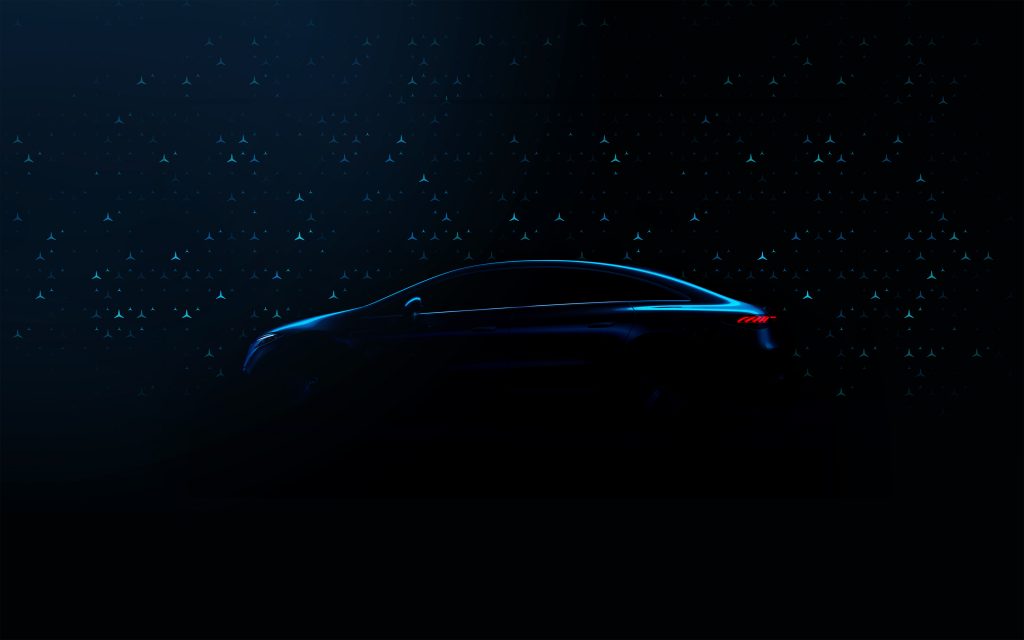Our Exclusive Video of the Mercedes-Benz Vision EQS Sedan
Inside the company’s design studio, we learn the ins and outs of the luxurious electric sedan
If anyone is searching for a signal that it’s a new era at Mercedes-Benz, one need only look at the Vision EQS sedan—and the stand at the IAA Frankfurt Motor Show (where it was debuted today) proves it. In our exclusive video, we take you behind-the-scenes to the company’s design studio in Sindelfingen, Germany and speak to some of the people involved in creating it. They offer insight on its evolved design language, new materials and technology.
Betting on a consensus shift from gas- to electric-powered vehicles, Mercedes-Benz is making considerable progress into its EQ line. First, there was the Concept EQ SUV in 2017 (the production version of it, the EQC, lands in dealers in just a few months). The smaller Concept EQA also debuted that year, and the seductive Vision EQ Silver Arrow single-seat sports car in 2018. Just a few weeks ago the new Concept EQV van was announced. Each new car brings us further from familiar-looking vehicles that are electrified to those that are born electric. And if the Vision EQS—unveiled today by Ola Källenius, the company’s new CEO—is a sign of what’s to come, it’s a future we’re excited to see.

In Mercedes-Benz speak, a “concept” is usually a production-ready vehicle that is actually going to be made, and the finished model will appear very similar. A “vision” vehicle is an ideation, a very well-informed exercise in teasing design elements and technology that we’re going to see in the near future, but perhaps not in a format that’s as close to the vision as a concept car. That said, we have high hopes to see how the EQ division creates a top-of-the-line car that plays nicely with the other S-class vehicles in the family.

With its long canopy, yacht-inspired interior and hulking wheels, the Vision EQS has swagger to spare. Contrasting coats of paint (black on the roof and hood and at the base trim, with a stainless steel-like middle) lead the eye along, guiding it across the rear with its futuristic lighting display comprised of hundreds of mini Mercedes stars, over the wheel wells and the sloping sides to the illuminated grille.

There, a configuration of 188 individual LED lights (same as those on the rear) where headlights are most often found, can signal more precisely, corresponding with the environment around it rather than imparting itself upon it. (For inspiration, see the Concept EFS). Holographic lens modules afford “digital light,” a floating, incredibly customizable glow, that blends in with the vehicle’s 360-degree light-belt. Created in-house, it’s surely a sign of the next evolution of lighting and signaling.
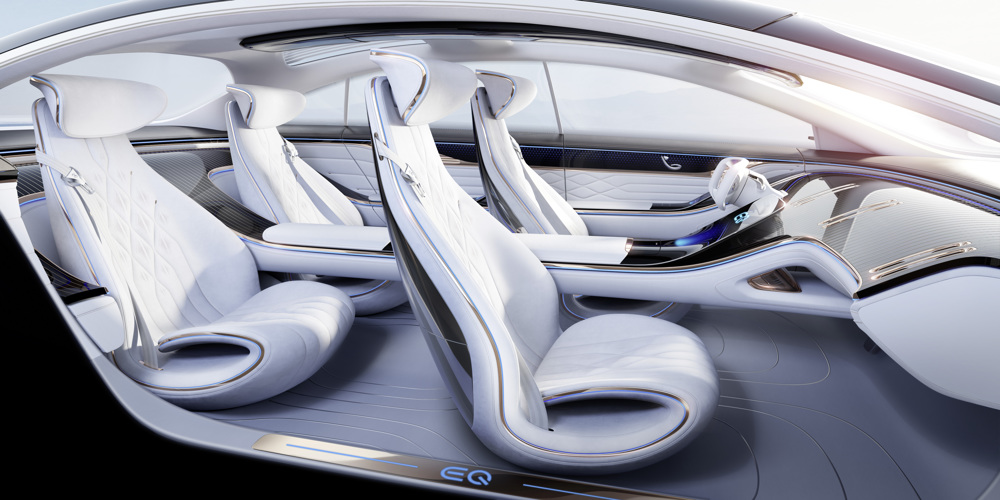
Inside, the seamlessness continues. The cockpit-like cabin boasts four seats, a floating middle console and a dash that runs into the exterior. It’s spacious and comfortable. But, comfort, as Mercedes-Benz is seeking to prove, this doesn’t need to come at the cost of innovation. High-quality crystal white DINAMICA microfibre, native maple trim made from recycled PET bottles, artificial leather and a sturdy roof liner made of recycled ocean waste plastic meet to form an interior that’s eco-friendly and indistinguishable from luxury interiors made using traditional materials.
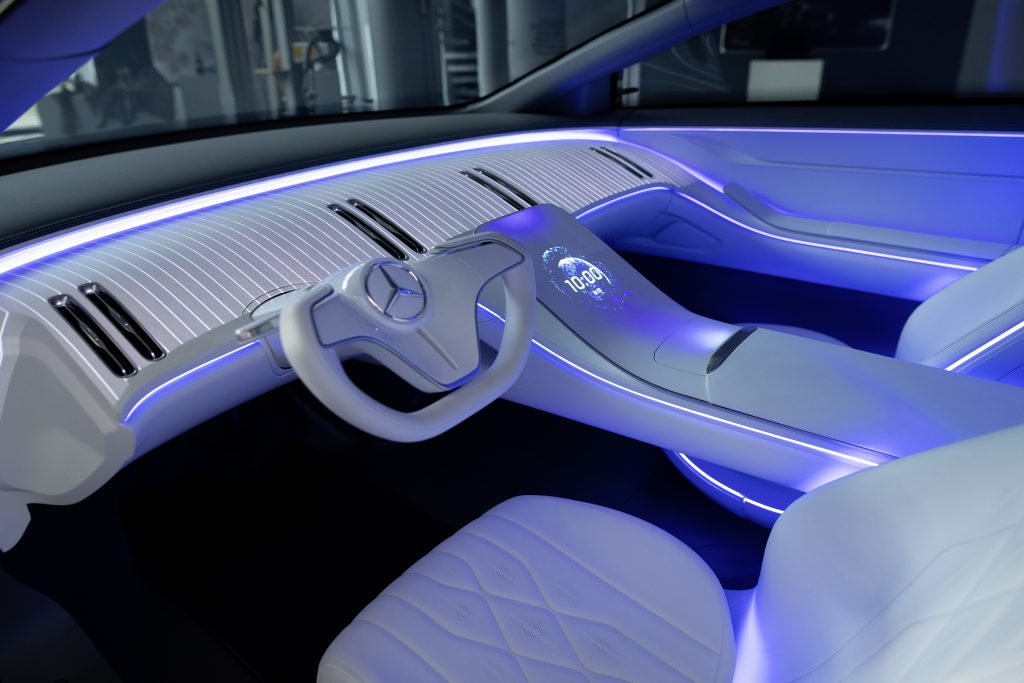
The interior also plays host to a revamped infotainment system and MBUX. The sprawling, sculptural dash can be utilized in its entirety for digital displays and interactive control systems. Cut-outs for the air vents, fragrance emitters and speakers are cased in contrasting rose gold (which also appears as exterior trim).
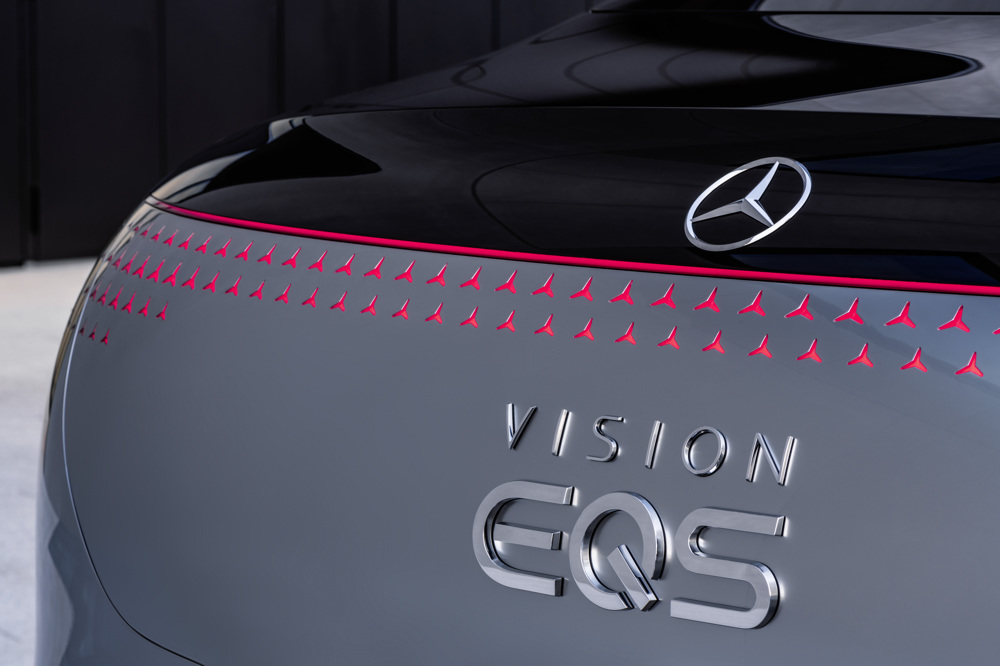
The significant details hidden within this concept prove to be more than fantasy-based one-off designs. Plenty of the impressive features and design decisions will be present in future Mercedes-Benz models, especially those (as the company veers toward a carbon-neutral fleet by 2040) that are electrically powered. The Vision EQS’ 700km (435 mile) range, ability to recharge to 80% in 20 minutes and zero to 100km/h time of under 4.5 seconds should all find their way into the eventual production sedan. The modular Vision EQS platform (frame, track, battery, drivetrain and chassis) on which this vehicle is based will be modified and applied to forthcoming cars. With autonomous cars still a generation away, the Vision EQS shows that a human driver is not going away yet (despite what we imagine will be a range of new enhanced driving features) and affirms that Mercedes-Benz’s vision of mobility in the near future is still human-centric, albeit significantly better-looking and -performing.
Images courtesy of Mercedes-Benz












